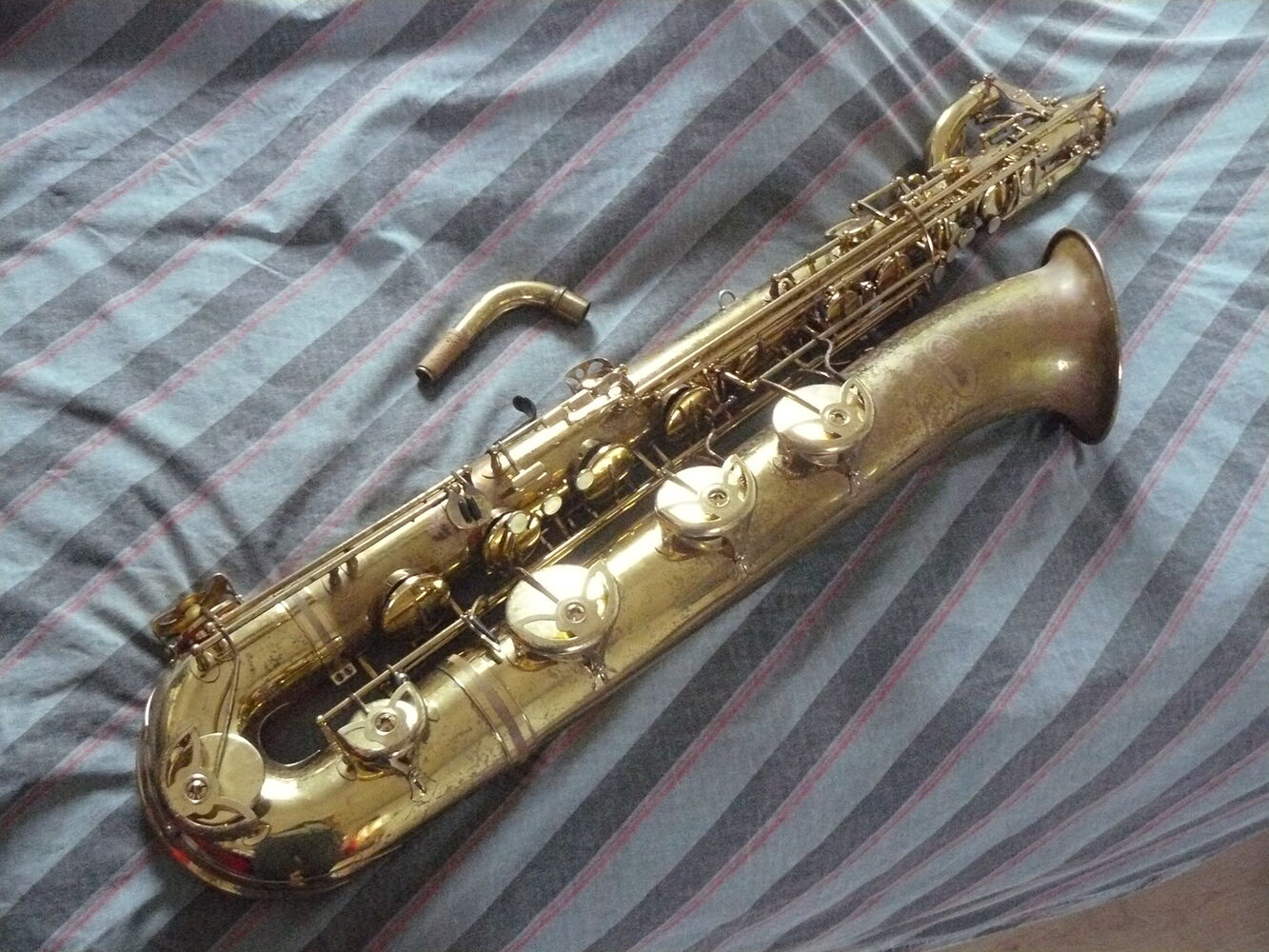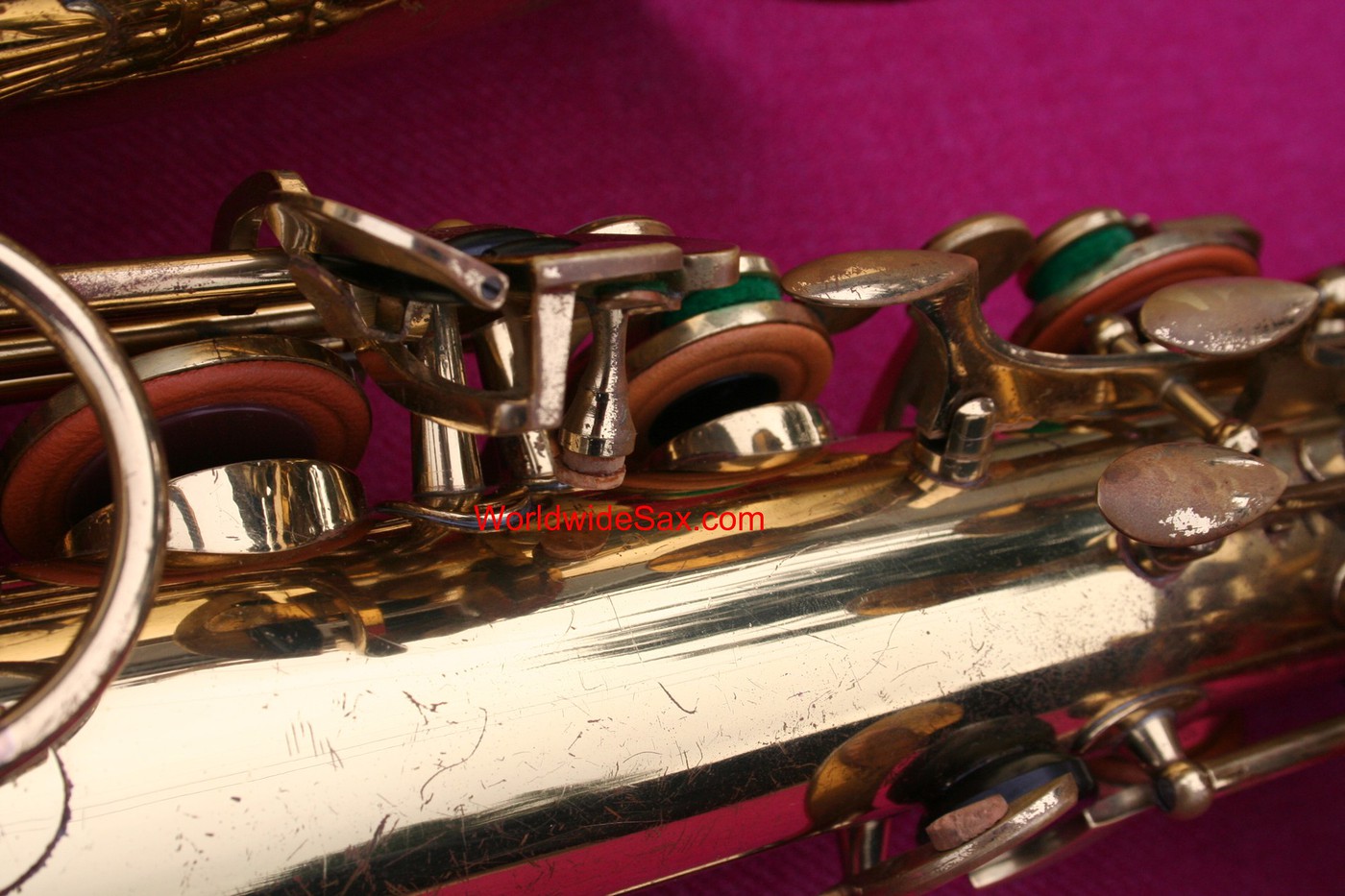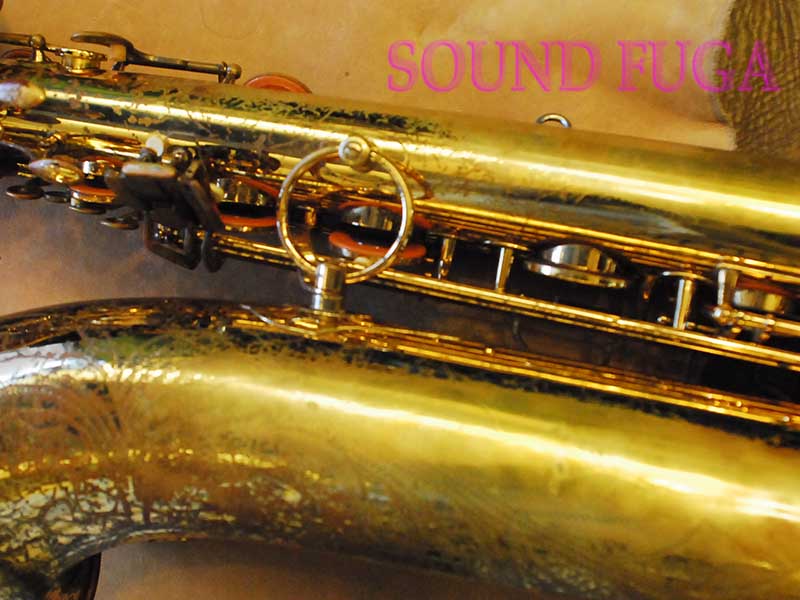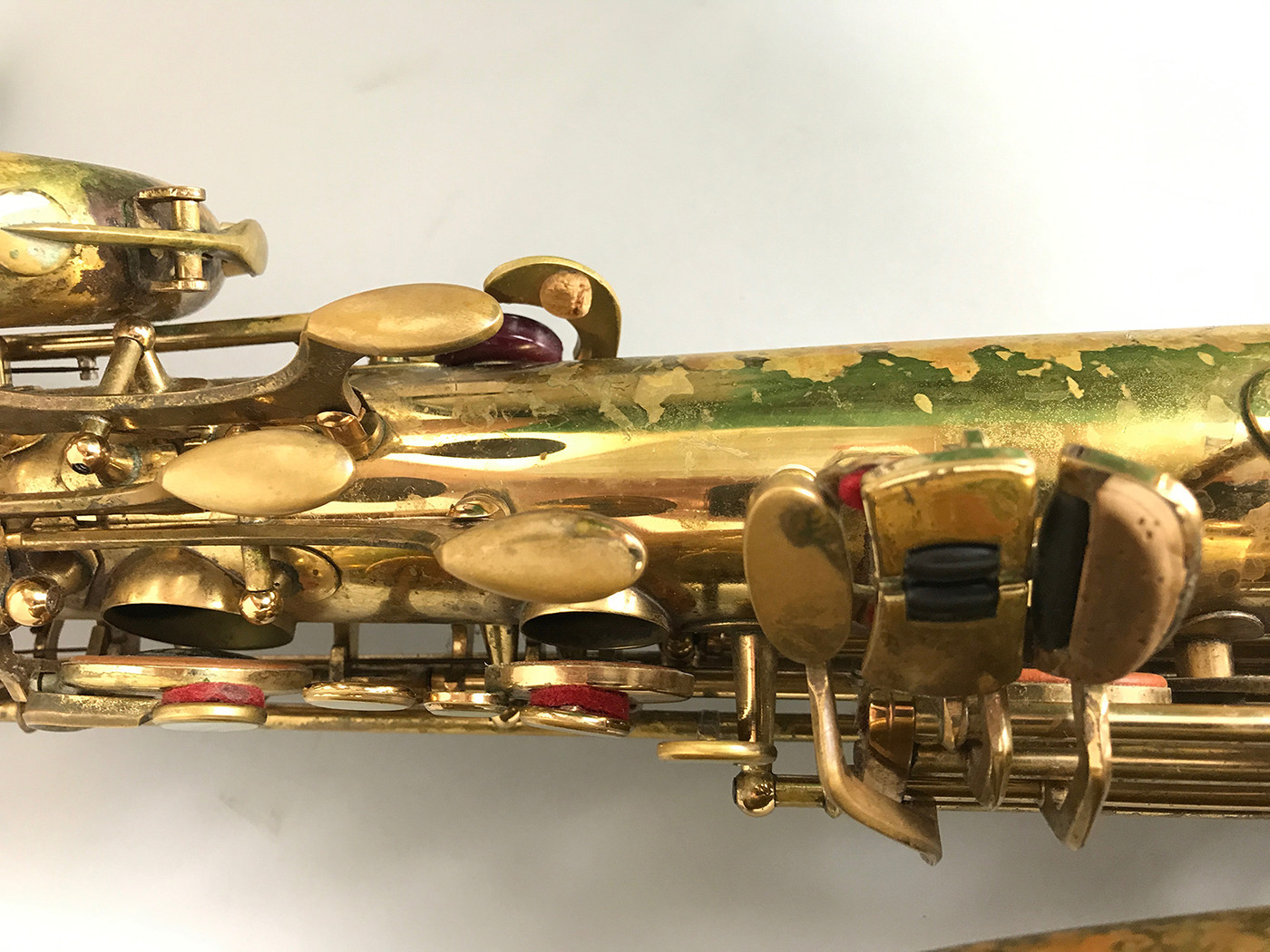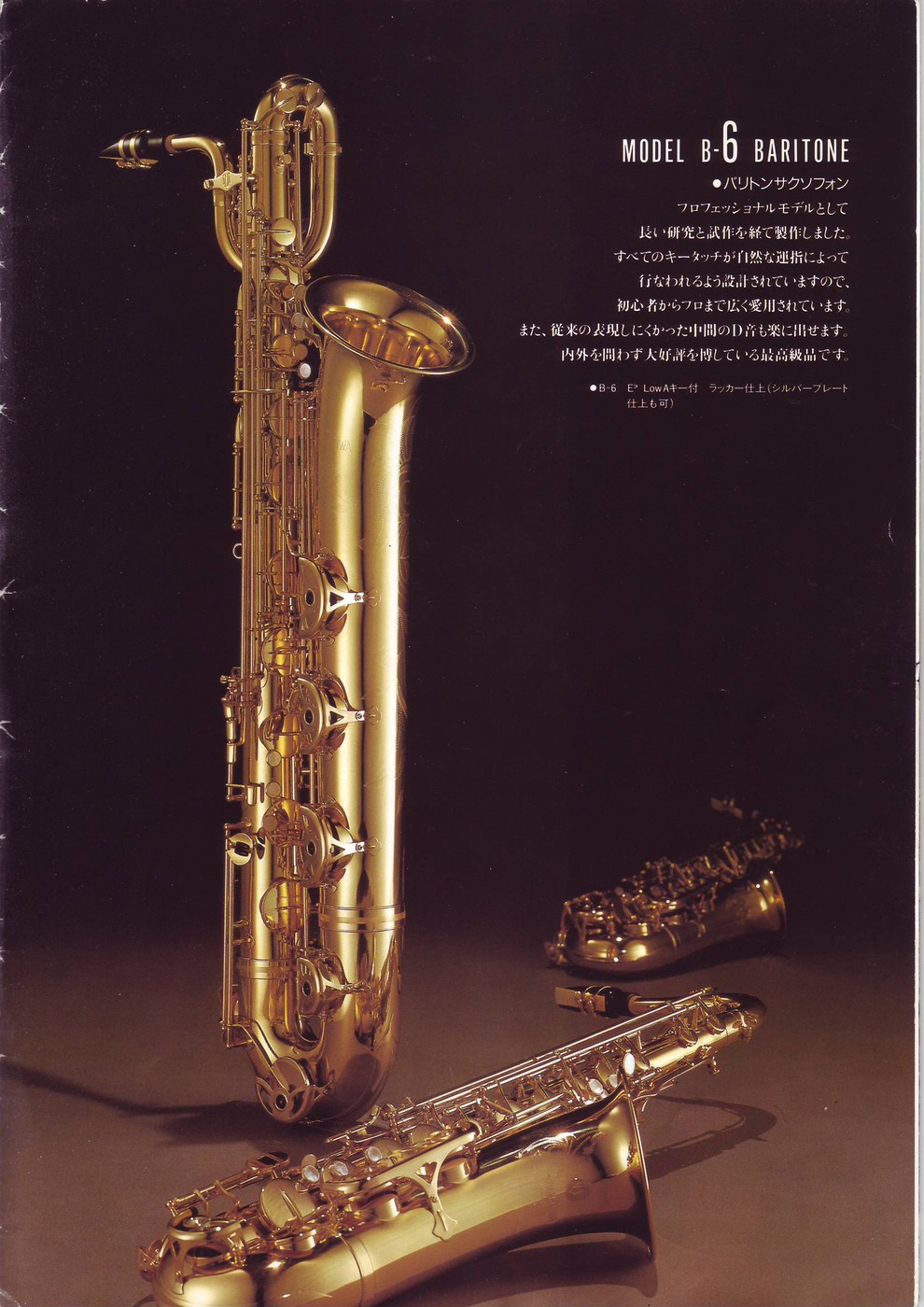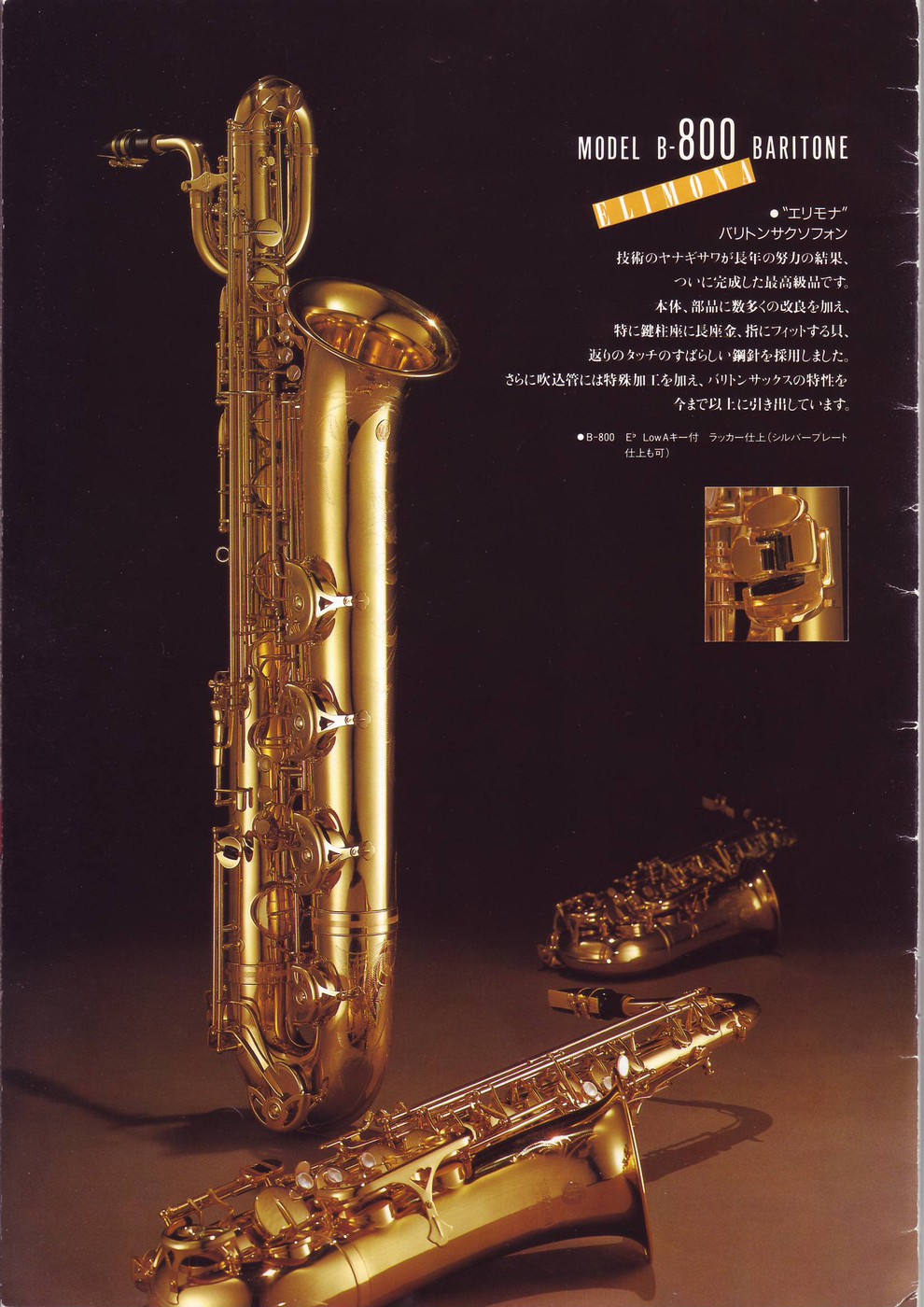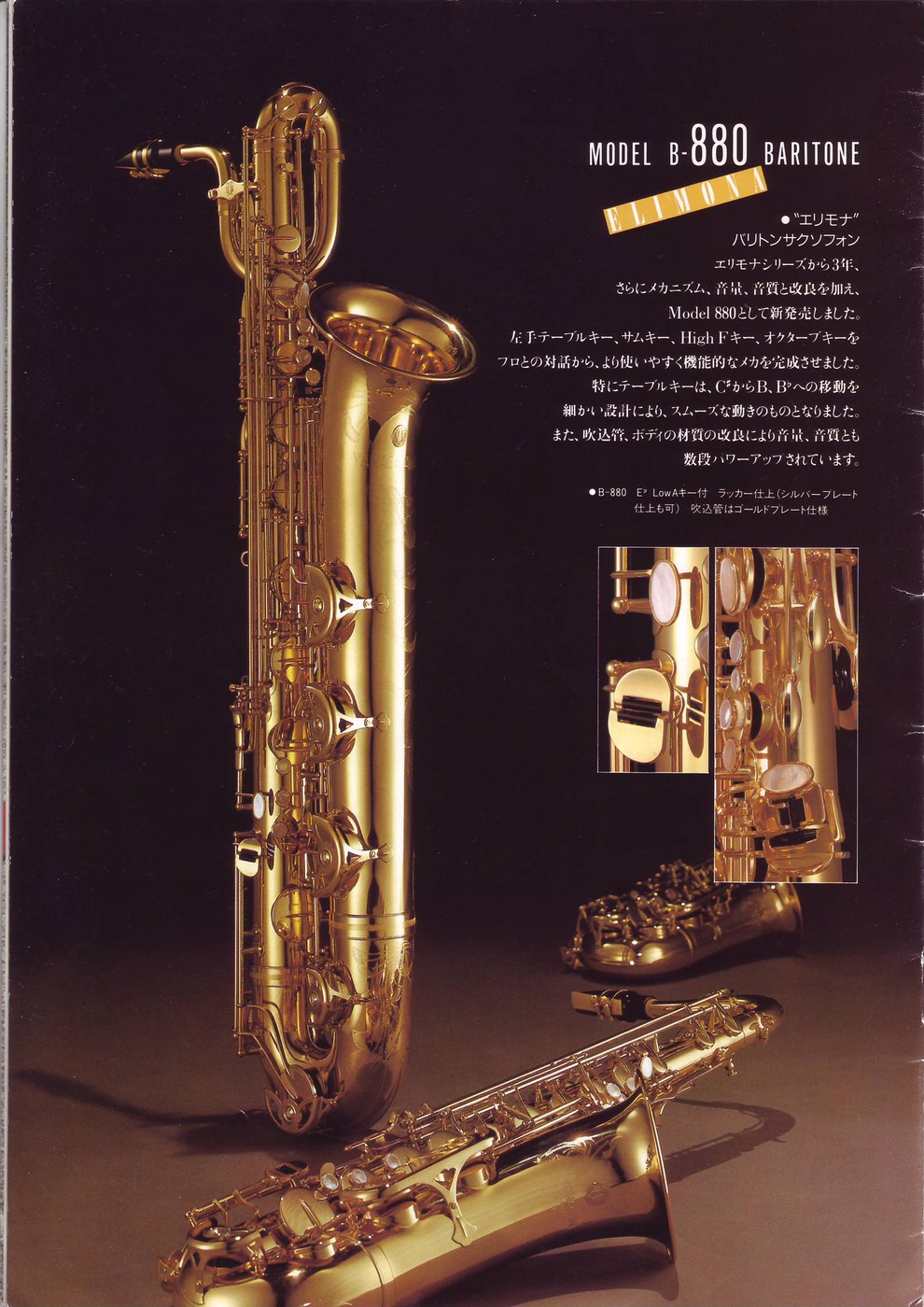Hello all,
I want to start a thread here to discuss older Yanagisawa baris, particularly the model B-6 vs. the B 800 and B-880.
Working backwards, It is easy to pick out a B-880 bari as the pics I've seen show an oval Pearl high F key and a pearl side F# as well as 880 being stamped into the body.
The challenge here is I would like to determine what features separate a B-6 from a B-800. The "Elimona" B-800 model is easy to tell vs. a B-6 because they have a dual-arm Low C.
What I would like to determine is: Are there are B-800's built with only a single arm Low-C...and what other main features separate a B-6 from a B-800?
As I have looked at as many horns as I can find on the 'net, I have noticed three differences that warrant consideration to try to separate a B-6 from a B-800:
Note the following:
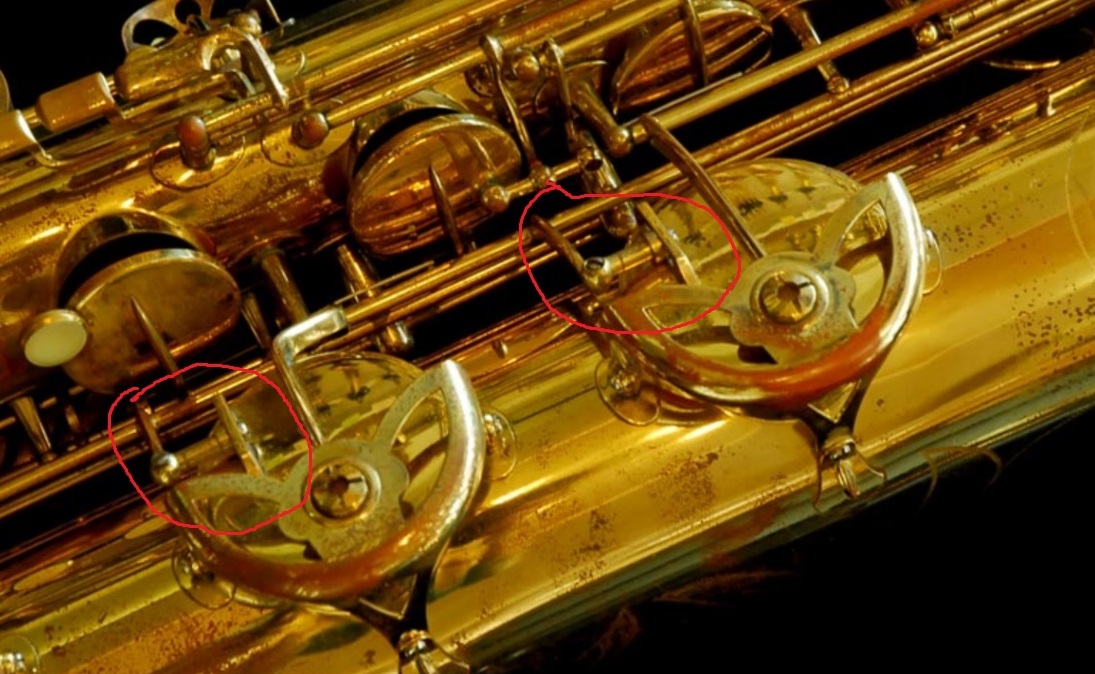
Here is B-6 S/N 5778XX with the same key features (and a metal thumbrest and single-arm Low C):

I think the two above saxes, being identical, are good examples of a B-6.
Now look at this sax: https://www.barnardrepair.com/baritone-saxophones-for-sale/yanagisawa-800-low-a-baritone-saxophone
What is it? The seller claimed it is a B-800; Pete thinks it is a B-6. I think what it is is up for discussion.
Note the following:
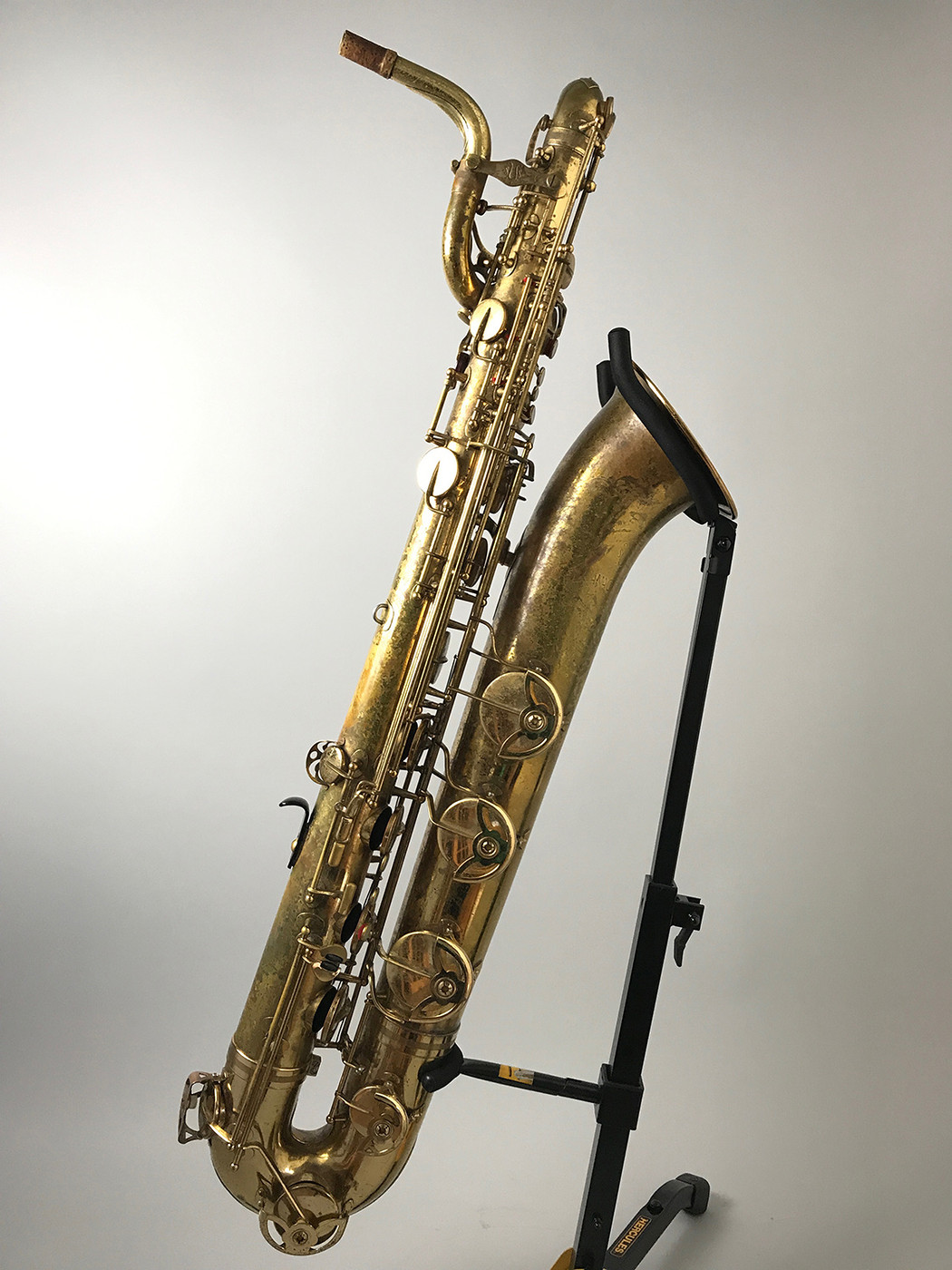
Here is my (October?) 1977 Vito Yanagisawa Stencil S/N 10771XXX:
Note the following:
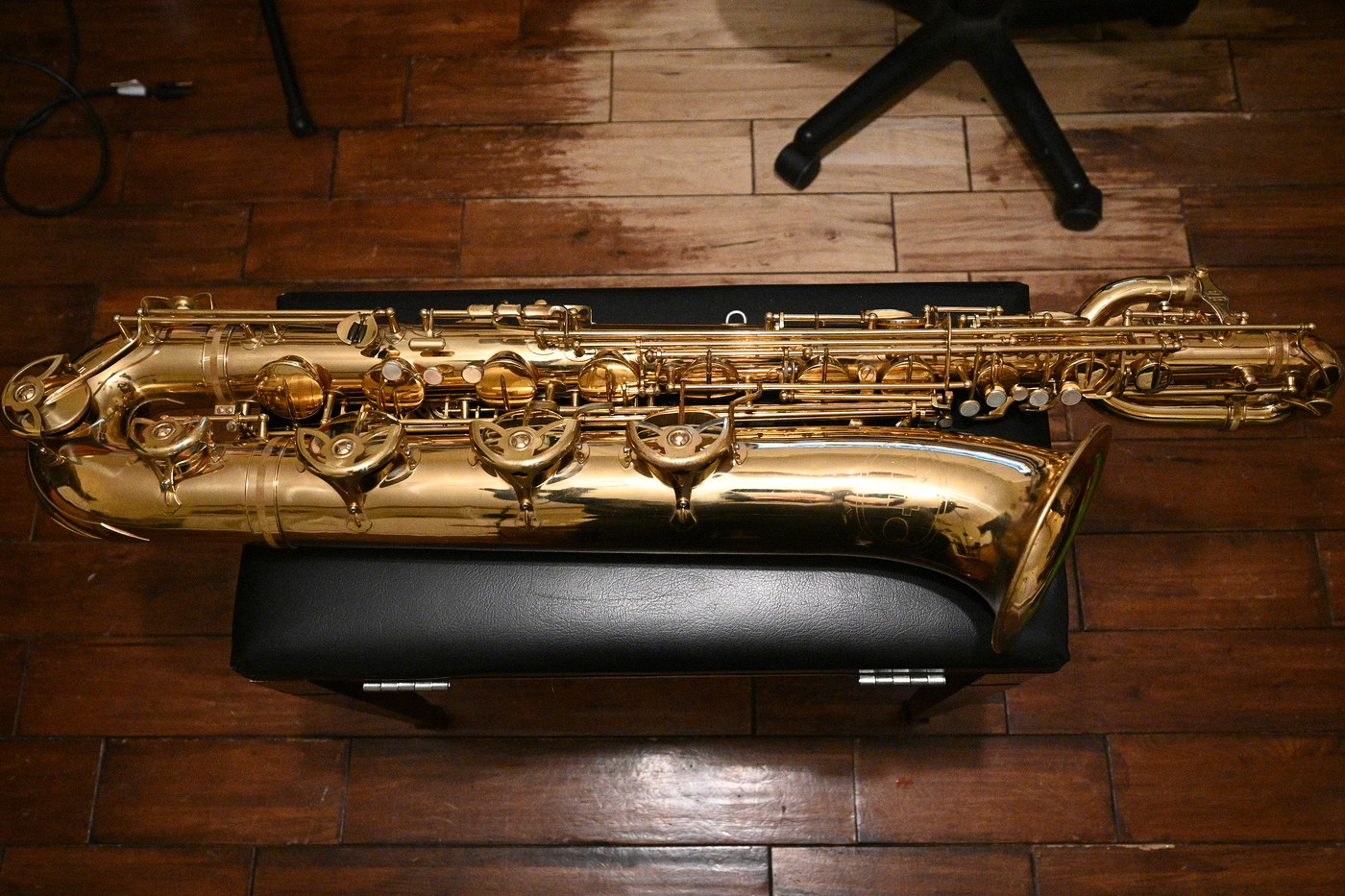
I also know for a fact that the "Elimona" B-800 had dual-arm Low C, as there is a catalog picture of it here (I wish I could see the thumbrest on this horn):

So up for discussion:
Thanks!
Shane
I want to start a thread here to discuss older Yanagisawa baris, particularly the model B-6 vs. the B 800 and B-880.
Working backwards, It is easy to pick out a B-880 bari as the pics I've seen show an oval Pearl high F key and a pearl side F# as well as 880 being stamped into the body.
The challenge here is I would like to determine what features separate a B-6 from a B-800. The "Elimona" B-800 model is easy to tell vs. a B-6 because they have a dual-arm Low C.
What I would like to determine is: Are there are B-800's built with only a single arm Low-C...and what other main features separate a B-6 from a B-800?
As I have looked at as many horns as I can find on the 'net, I have noticed three differences that warrant consideration to try to separate a B-6 from a B-800:
- Thumb rests (metal vs. black)
- Key mechanisms on Low A and Low Bb keys
- Double Arm Low C key
Note the following:
- Single-arm Low C key
- Metal thumbrest
- The circled area on the Low A and Low Bb keys:

Here is B-6 S/N 5778XX with the same key features (and a metal thumbrest and single-arm Low C):

I think the two above saxes, being identical, are good examples of a B-6.
Now look at this sax: https://www.barnardrepair.com/baritone-saxophones-for-sale/yanagisawa-800-low-a-baritone-saxophone
What is it? The seller claimed it is a B-800; Pete thinks it is a B-6. I think what it is is up for discussion.
Note the following:
- Black thumbrest
- Single-arm Low-C
- Look at the Low A and Bb keys...they lack the aforementioned key design

Here is my (October?) 1977 Vito Yanagisawa Stencil S/N 10771XXX:
Note the following:
- Metal thumbrest (May be a Vito design spec; they did that with Vito 7131RK Yamaha YAS-23 Alto stencils; Yamahas had plastic thumbrests, Vitos had metal)
- Different Low A and Low C key mechanism vs. B-6 - just like the Barnard horn I posted above)
- Single Arm Low-C

I also know for a fact that the "Elimona" B-800 had dual-arm Low C, as there is a catalog picture of it here (I wish I could see the thumbrest on this horn):

So up for discussion:
- Are the two "mystery" horns B-6's or B-800's?
- Could the Low A / Low Bb key re-design be what "makes" a B-800, or is it the Low C key moving from a single to a double arm...or a combination of those features?
- Did Yanagisawa make a B-800 that had the Low A / Low Bb design of the "mystery" horns but a single arm Low C key and then add the double arm Low C as part of the "Elimona" badging (that arm may have been developed as they designed the B-880 and then fitted to the B-800 as well)
Thanks!
Shane

